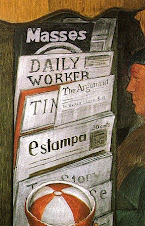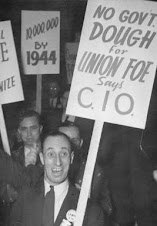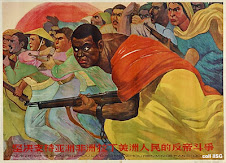If you are interested making revolutionary change in the United States, it is an absolute necessity to understand the history of the country and the struggles for justice and revolution of generations past. Here are my recommendations:

“We Want Freedom: A Life in the Black Panther Party” by Mumia Abu Jamal – This book is by far the greatest history of the Black Panther Party ever written. Do not be deceived by the title, because it is far from being simply a personal memoir. Jamal occasionally reminisces about his personal experiences at the beginning of chapters, but the overwhelming majority of the book's content is meticulously researched, factual, detailed accounts of one the most influential Black Nationalist and Communist organization of the post-war period.
Mumia highlights the untold story of how the Black Panther Party supported LGBT rights.
He also takes on the accusations, some true and some false, of sexism in the party’s culture. Jamal analyzes the party’s ideology as influenced by both Malcolm X and Mao Zedong. He highlights the party’s weakness, strengths, methods, and strategy.
Jamal’s research of the FBI war on the panthers is also detailed and documented. He gives insights into the personalities of FBI snitches and the methods used to tear this organizations apart. He highlights the reason the Black Panther Party grew from being the brainchild of two Black intellectuals in Oakland, to being a world phenomenon with chapters as far as Israel and Libya.
He tells of how the Black Panther Party called a "People's Constitutional Convention" and together with several other radical groups, convened in Philadelphia to compose a new constitution for the U.S. He also tells of "survival pending revolution" theory, and the development of Newton's concept of "intercommunalism."
A must read for anyone who wishes to understand the Black Panther Party and the impact it had on the U.S. revolutionary movement and working class.

“Detroit: I Do Mind Dying, A Study in Urban Revolution" By Dan Georgakas and Marvin Surkin - While the 1960s has been highly researched and written about, and accounts about the student Anti-war movement, and the urban Black Liberation struggle until around 1972 are numerous, this text tells what happened next.
It focuses on Detroit, the center of the automotive industry. It tells how the college radicals moved from the campuses to the plants, and Detroit became a center of Marxist-Leninist activity far up into the 1980s.
The book tells of radical attorney Kenneth Cockrell and the “Dodge Revolutionary Union Movement”, a fraction within the United Auto Workers who demanded an end to internal racist practices and cooperation with management.
The revolutionary climate of Motor City in the 1970s comes across stronger than ever. The book tells of a Communist judge who was elected and practiced his Marxist ideology from the bench. It tells of how the city rallied to the defense of Jimmy Johnson, a mentally ill autoworker, who shot his boss and a few racist co-workers in response to discrimination and abuse on the job. The book also tells of how Coleman Young rose to power, in a popular campaign against police brutality.
Overall, this book is so important, because the period it describes is forgotten.
In Detroit especially, but also in many other urban centers during the 1970s and early 1980s, Marxism-Leninism was a key factor in U.S. politics. This fact is forgotten by too many.
The fact that DRUM made a point of bringing Marxism to the working class, and had numerous successes during their "wildcat summer" also contains many valuable lessons for today's radicals.

“Red Chicago: American Communism at its grassroots” by Randi Storch –
This is a history of the Communist Party’s “Third Period” from 1928-35 and how it impacted Chicago, the city that William Z. Foster’s “Toward Soviet America” projected to be the capital city of the future “United Soviet States of America.”
The book uses the statistics and internal reports from the CP’s archives showing the problems the party faced, as well as the strengths. The book documents how the Communist Party became embraced by the Black Community as ever other group, even the various so-called “socialists”, embraced racism and refused to confront the conditions of Chicago’s Black working class.
The book tells of how the Communist Party built the unemployment councils who numerous times battled police in the streets, rallying around a program of red revolution and class war.
One fact that comes out in the text is that while the Communist Party during this period officially considered the Socialist Party and other socialist groups to be “Social Fascists”, the sectarianism of the Comintern line was not practiced by the rank and file.
The youth especially saw themselves as part of the same movement with their fellow radicals and did not fall into the left infighting that the Communist Party was known for during this period.
The manner in which the CP also built “shop nuclei” and maneuvered its activities in each factory like troops in a battlefield also comes out well.
The text is filled with personal anecdotes and details and seriously discusses the period. The book is not as easy to read as the others, and is much more academic in its writing style than the more popularly written histories.
Regardless, it is still full of valuable information and history.

“The History of the Communist Party of the United States” by William Z. Foster – This is a 500 page, official, textbook style history of the Communist Party, published in 1952. The book was translated into Russian, and used in Soviet schools when the history of the U.S. was studied.
The book's historical account begins far before the 1919 CP founding convention.
It tells of the lead up to the U.S. civil war, and how several Generals in the Union Army were open Marxists, and how Marx help secured a victory for the Union Army by organizing British textile workers to strike and refuse to work with cotton picked by slaves.
The book gives a detailed history of the rise and fall of Daniel DeLeon and the Socialist Labor Party, as well as the internal, intense political fights that defined the Socialist Party of America in the age of Eugene Debs.
The history of the Communist Party, USA is of course, the official line of the CP at the time of the books publication. The book spends a great deal of time repudiating the Communist Party’s activities during World War Two, and explaining why Earl Browder, who dissolved the Communist Party and advocated social democratic patriotism, was expelled.
The book ends with the Smith Act Trials of 1948, and like all of Foster’s works, the last chapter is a call to battle and manifesto envisioning the future Socialist United States that he spent his life fighting for.
The book is real treasure despite numerous apologetics for obviously flawed policies. The author of the book is someone who lived and participated very heavily the events the book describes.
This is a masterpiece.

“The Teamster Series” by Farrell Dobbs – This four volume work is the memoir of Farrell Dobbs, the coal truck driver who was recruited into the Trotskyist movement in the 1930s, and built the Teamsters into a nationally known, fighting union.
The International Brotherhood of Teamster is well known in modern times for its reputation as a “tough union.” However, in 1932 it was a small company union with little influence, until the “Communist League of America”, the followers of Leon Trotsky who had been dumped out of the Communist Party poured into its ranks.
The books detail how the Trotskyists fought not just against the employers and their fascist “Citizens Alliance” but also against the rightist leadership of their own union, which was happy to sit back and not fight on behalf of the membership.
The book gives one a real sense of the proletarian militancy of the period. The figures described in these texts are not hippies, pacifist, or leftist intellectuals. This book tells of the period of 1934-1940, when the people later to be dubbed “joe sixpack” by the “New Left” became militant, violent, revolutionaries who were ready fight like hell for their families and their livelihoods against corrupt employers and politicians.
There was a time, though unknown today, when huge protests and strikes, led by Communists, were not only being held in New York City and San Francisco, but in Nebraska, Idaho, Minnesota, and Kansas. It was a time of intense struggle, when the words “class against class” were on the lips of literally millions of people in the United States.
Like many of the books written from the Trotskyist perspective, its greatest flaw is its sectarianism. Many pages are wasted on personal, ad-hominem attacks on the leadership of the Communist Party who Dobbs insists on calling “The Stalinists.”
However, the history contained within the volumes is so powerful and well told, the personal bitterness and begrudging attitude of its writer cannot ruin it.
Volume one, “Teamster Rebellion” tells of the Minneapolis General Strike of 1934.
Volume two “Teamster Power” tells of how the Teamsters took control of Minneapolis and used the power of the strike and eventually expanded the union.
Volume three “Teamster Politics” tells of how the Trotskyists worked within the union, and fought for the rights of unemployed workers, against the second world war, and numerous other progressive causes, resisting the rightist leadership of Tobin the entire time.
The final volume, “Teamster Bureaucracy” tells of how, because the Trotskyists and their newly formed Socialist Workers Party refused to support the U.S. in the Second World War, they were thrown into prison and kicked out of the very union they built into prominence.
Worth reading for anyone, especially today’s “rust belt radicals.” As an Ohioan, it made me think back to the stories I heard from my grandfather about labor unions before World War Two. It was fun to realize that a good deal of those folks weren’t just “tough union men,” they were Bolsheviks!
(After reading this book, the film “F.I.S.T.” starring Sylvester Stallone is quite enjoyable.)

“Labor's Untold Story” by Richard O. Boyer & Herbert Morais – This book, printed by the United Electrical Workers (UE) is a popularly written history of the Labor Movement in the United States. It reads like an epic novel. It takes its readers to Colorado’s mines where workers formed trenches and battled scabs and the national guard with rifles led by Bill Haywood. It tells of the battle to free Sacco and Vanzetti, and the struggle against corrupt labor leaders like William Gompers.
This is the kind of book I would want everyone of my coworkers and classmates to read, and would have no problem giving to them. It requires no introduction or previous background knowledge. The book tells how the working class in the U.S. battled for its very right to survive and formed the CIO.
This beautifully written masterpiece is supplemented by Roger Keerans text “The Communist Party and Auto Workers Unions” which specifically describes the role of the Communist Party in the events described.
“Brother Bill Mckie” by Philip Bonosky is another important volume describing the rise of the CIO. It describes the unionization of Ford through the perspective of Bill Mckie, a Scottish born working class hero and UAW organizer who proudly was a member of the Communist Party.










































No comments:
Post a Comment